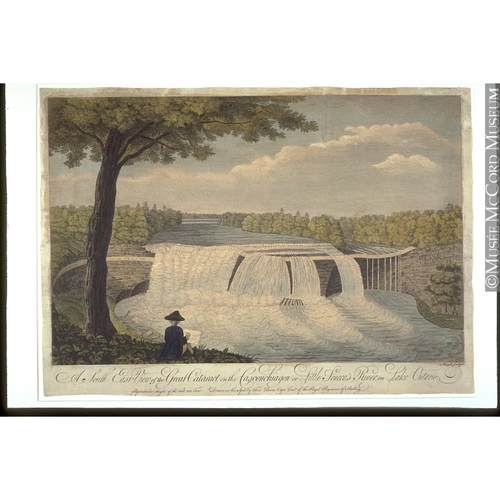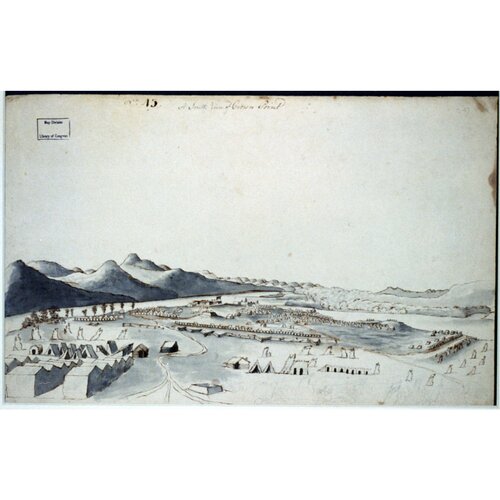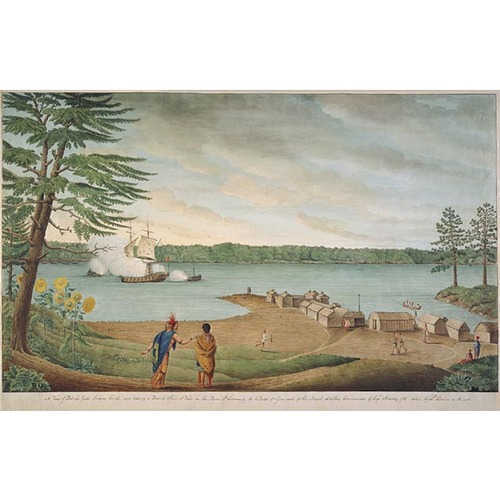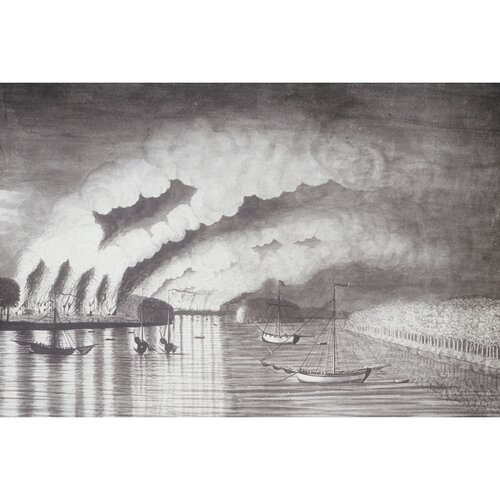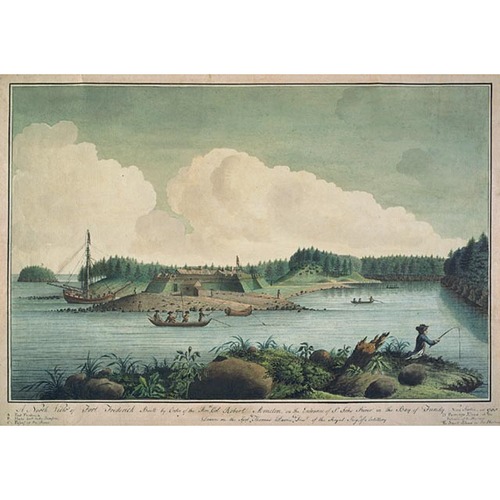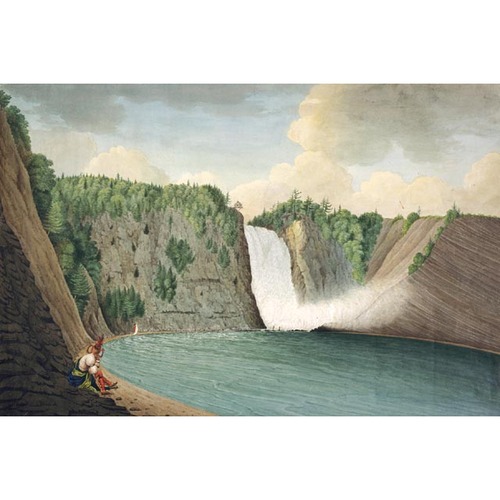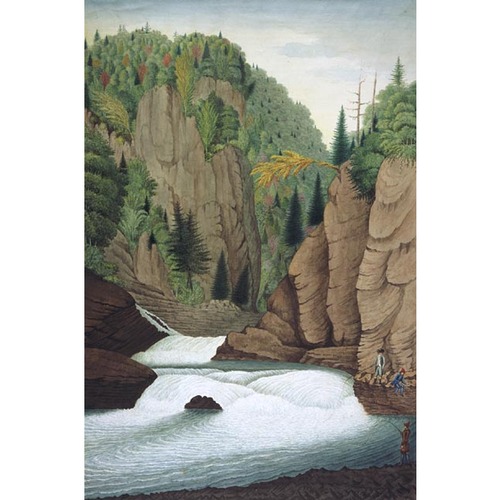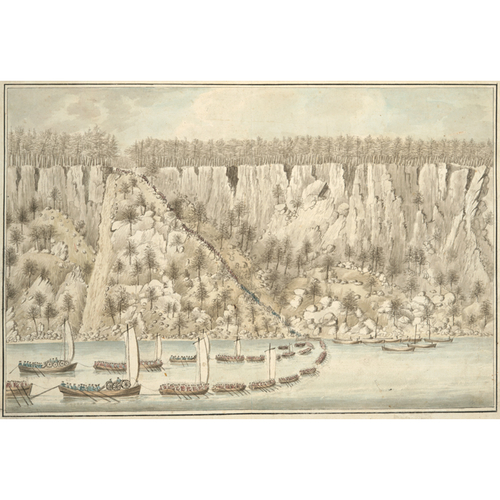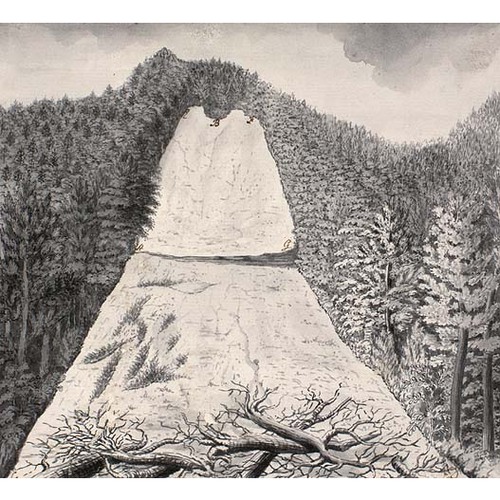![Description A View of the Montmorency Falls near Quebec Date 1791(1791) Source [1] Author Thomas Davies Permission (Reusing this file) Public domainPublic domainfalsefalse This image (or other media file) is in the public domain because its copyright has expired. This applies to Australia, the European Union and those countries with a copyright term of life of the author plus 70 years. You must also include a United States public domain tag to indicate why this work is in the public domain in the United States. Note that a few countries have copyright terms longer than 70 years: Mexico has 100 years, Colombia has 80 years, and Guatemala and Samoa have 75 years, Soviet Union has 74 years for some authors. This image may not be in the public domain in these countries, which moreover do not implement the rule of the shorter term. Côte d'Ivoire has a general copyright term of 99 yea Original title: Description A View of the Montmorency Falls near Quebec Date 1791(1791) Source [1] Author Thomas Davies Permission (Reusing this file) Public domainPublic domainfalsefalse This image (or other media file) is in the public domain because its copyright has expired. This applies to Australia, the European Union and those countries with a copyright term of life of the author plus 70 years. You must also include a United States public domain tag to indicate why this work is in the public domain in the United States. Note that a few countries have copyright terms longer than 70 years: Mexico has 100 years, Colombia has 80 years, and Guatemala and Samoa have 75 years, Soviet Union has 74 years for some authors. This image may not be in the public domain in these countries, which moreover do not implement the rule of the shorter term. Côte d'Ivoire has a general copyright term of 99 yea](/bioimages/w600.11413.jpg)
Source: Courtesy of Wikimedia Commons
DAVIES, THOMAS, army officer and painter in water-colours; b. c. 1737, probably in Shooter’s Hill (London), England, son of David Davies; m. Mary –, and they had two children; d. 16 March 1812 in Blackheath (London), England.
On 1 March 1755 Thomas Davies was appointed a gentleman cadet at the Royal Military Academy, Woolwich (London). Like other artillery officers of his period he studied drawing, presumably under the obscure Gamaliel Massiot, drawing-master at Woolwich from 1744 to 1768. Topographical drawing was the only means at the time of making a rapid and accurate visual record of military value and, as such, required the utmost attention to detail and fidelity to nature, usually to the detriment of idealism. Consequently most soldier-artists never rose above the level of craftsmen. Topography, however, had also become fashionable as an art in the 18th century, for the nobility had begun seeking portraits of their estates and representations of the developing New World. The water-colour sketch or drawing, inexpensive and easily handled, most aptly filled this demand. An early English artist in this field was Paul Sandby, who soon established himself as one of the best and most influential water-colourists of his time.
In 1756 Davies was appointed lieutenant fireworker in the Royal Artillery and the following year he was promoted second lieutenant. He was sent on an abortive expedition against Louisbourg, Île Royale (Cape Breton Island), in 1757, and a water-colour drawing of Halifax that year is Davies’s earliest dated picture. It exhibits the dryness of line and lack of colour of the military artist, but it combines diagrammatic accuracy with a picturesqueness of conception that would become characteristic of Davies. Several flights of birds indicate the sportsman and a burgeoning ornithologist. From 1758 come a diagrammatic record of Amherst*’s siege of Louisbourg and two views made during a stint with Colonel Robert Monckton*’s force, which laid waste the Acadian settlements in the Saint John valley (N.B.).
In 1759 Davies was promoted first lieutenant and joined Amherst’s expedition to Lake Champlain. He recorded both Fort Ticonderoga (near Ticonderoga, N.Y.) and the new British fort at Crown Point and served as “Batteaux-Master” for the artillery. After wintering in New York he was with Amherst’s campaign of 1760 against Montreal. On the St Lawrence he painted a colourful view of Fort La Galette (near Ogdensburg, N.Y.); he himself was in charge of one of the row-galleys shown in the picture attacking a French sailing vessel. He also recorded the rough passage of the rapids, the last obstacle before Montreal, where he was the first to hoist the British flag over the city. Over the next few years he was employed in surveying the St Lawrence and also the south shore of, and rivers flowing into, Lake Ontario as far as the Niagara River. A map of the channels of the Genesee River, dated 1760, and a view of its falls at present-day Rochester, N.Y., done the following year, survive, as does a schematic drawing of Niagara Falls dated 1762. The same year Davies painted a water-colour of Montreal from Île Sainte-Hélène. Representing the picturesque style to perfection, it shows the town behind an elegant couple languidly reclining under a screen of trees laced over with fretted vines in the approved 18th-century manner. In these pictures the attention to flora and fauna indicates a growing interest in natural history. Two views of Martinique and a plan of Havana, Cuba, all from 1762 as well, were probably copied from another artist’s work since Davies seems to have been in North America in 1761 and 1762.
In 1763, at the end of the Seven Years’ War, Davies returned to England, but he was back in New York the following year. It is possible that he had met Paul Sandby in England since a view of Flushing on Long Island, dated 1765, and one of Greenbush on the Hudson River from 1766 show the influence of Sandby’s broad horizontal planes of composition and transparent washes of colour. A series of American waterfalls sketched in 1766, in particular those of the Genesee and of Niagara, mark the beginnings of a personal style characterized by strong compositions and glowing colours. In 1767 Davies’s company again sailed for England. During a six-year stay he exhibited American views and flower-pieces at the Royal Academy, London, and in 1768 published six engravings, dedicated to Amherst, of his waterfalls. In 1771 he was promoted captain and placed in command of a newly formed company of artillery at Woolwich, where Sandby had been drawing-master since 1768.
In 1773, on the eve of the American revolution, Davies again sailed for America, arriving at Halifax. His company moved to Boston the following year and doubtless saw action at Bunker Hill in June 1775. After William Howe’s evacuation of Boston in March 1776, it withdrew to Halifax, but soon reappeared on Long Island to join in the descent on New York. Davies made records of the actions at White Plains in October 1776 and at Fort Washington (New York) in November, as well as of Lieutenant-General Charles Cornwallis’s pursuit of General George Washington into New Jersey. In 1777 Davies took command of the artillery of Fort Knyphausen (formerly Fort Washington) and from its heights later painted two fine landscapes of the Hudson.
By mid 1779 Davies was back at Woolwich and in 1780, as Amherst’s aide-de-camp, he made charming drawings of ladies and gentlemen strolling among the troops stationed in the London parks during the Gordon riots. Over the years he had been cultivating an interest in birds, and he now began to win recognition for his work as a naturalist. Several of his drawings of exotic birds were engraved in Dr John Latham’s General synopsis of birds, published in London in three volumes from 1781 to 1785. In 1781 Davies was elected a fellow of the Royal Society of London. Promoted brevet major the following year, he became a lieutenant-colonel in 1783, when he apparently took command of the artillery at Gibraltar, of which he painted a number of views.
In 1786 he returned to America by way of Madeira and the West Indies, where he painted views enriched with natural and human detail, and in the autumn assumed command of the artillery at Quebec. It was during this peace-time posting that he executed his handsomest water-colours, mostly of Quebec and region, and developed his style to its highest point of excellence. From the competent yet narrowly topographical manner of the 1750s and the broader, picturesque technique of the 1770s, he now arrived at a style which, though still detailed, was monumental in composition, as well as delicate in its lines, simple and stylized in its rendering of forms, and rich in colour. To 20th-century eyes it seems to blend the virtues of the English water-colourist with those of an accomplished primitive and the illuminators of oriental manuscripts.
Davies returned to England in 1790 and rose in rank to colonel in 1794, major-general in 1796, and lieutenant-general in 1803. He became a member of the Linnean Society of London, publishing two articles in its Transactions, and continued his painting of views based on his own sketches or those of other artists. His last, and probably finest, work was a masterly panoramic view of Montreal, dated 1812, the very year of his death.
Davies was the most talented of all the early topographical painters in Canada, surpassing his predecessor Richard Short*, his contemporaries Hervey Smythe and James Peachey*, and his successors George Heriot* and James Pattison Cockburn*. Breaking with the tradition of the tinted drawing, he painted directly on white paper with a full range of pure, rich colours, and the fullness of his handling of the water-colour medium was almost unrivalled. His lack of formal training as an artist gave him a personal vision, intense in its expression of the land. Full of authentic details of places and of the houses, costumes, and occupations of the people, his representations correspond remarkably with the descriptions left by such observers as Pehr Kalm*, Isaac Weld*, Frederick George Heriot*, Frances Moore*, and Joseph Bouchette*. Though Davies, because his work was hidden away in private collections, had no direct influence on later Canadian artists, his perception of nature places him in the central tradition of Canadian art. The brilliance, breadth, and clarity of his landscapes would not be found again until the advent of the Group of Seven.
[Five of the six engravings of waterfalls in North America published by Davies in 1768 are also part of what is apparently the single-copy publication of Scenographia Americana, or a collection of views of North America and the West Indies . . . (London, 1768). The same subject-matter figured in numerous engravings and was used to illustrate Andrew Burnaby, Travels through the middle settlements in North America, in the years 1759 and 1760; with observations upon the state of the colonies (3rd ed., London, 1798), and other works.
Davies published a number of articles on zoology and, in particular, ornithology. A letter, dated 12 March 1770, to John Ellis of the Royal Society on preparing dead birds for preservation appeared in slightly modified form in the Philosophical Trans. of the Royal Soc. of London, 60 (1770): 184–87. Davies later published in the Trans. of the Linnean Soc. (London) “An account of the jumping mouse of Canada, dipus canadensis . . . ,” 4 (1798): 155–57, with a tinted engraving at page 85; “Account of a new species of muscicapa, from New South Wales . . . ,” 4: 240–42, with a tinted engraving at page 242; and “Description of menura superba, a bird of New South Wales,” 6 (1802): 207–10, also with a tinted engraving, at page 207.
In 1954 the National Gallery of Canada acquired from the Earl of Derby’s library most of the water-colours Thomas Davies did of Canadian subjects. This acquisition stirred interest in Davies, and two years later K. M. Fenwick and C. P. Stacey published “Thomas Davies, soldier and painter of eighteenth-century Canada,” Canadian Art (Ottawa), 13 (1956): 270–76, 300. Preparations for the National Gallery of Canada’s major exhibition in 1972 of the collection gave rise to three publications by R. H. Hubbard: “Thomas Davies, gunner and artist,” RSC Trans., 4th ser., 9 (1971), sect.ii: 327–49; Thomas Davies in early Canada (n.p., 1972); and Thomas Davies, c.1737–1812: an exhibition organized by the National Gallery of Canada (Ottawa, 1972), with a preface by C. P. Stacey. Some of the water-colours catalogued and reproduced in the last-named work are held by the Royal Artillery Institution, the British Library, and the Natural Hist. Museum in London; by the New York Hist. Soc. and the New York Public Library in New York City; the Winterthur Museum, at Winterthur, Del.; the Detroit Institute of Arts; the Royal Ontario Museum in Toronto; the PAC in Ottawa; and a number of private collections. The PAC’s holdings have been reproduced on microfiche in “T. Davies – C. Williams – G. R. Dartnell –D. Lysons – F. H. Varley,” comp. B. G. Wilson, Arch. Canada microfiches (Ottawa), 10 (1978). r.h.h.]
Cite This Article
R. H. Hubbard, “DAVIES, THOMAS,” in Dictionary of Canadian Biography, vol. 5, University of Toronto/Université Laval, 2003–, accessed January 22, 2025, https://www.biographi.ca/en/bio/davies_thomas_5E.html.
The citation above shows the format for footnotes and endnotes according to the Chicago manual of style (16th edition). Information to be used in other citation formats:
| Permalink: | https://www.biographi.ca/en/bio/davies_thomas_5E.html |
| Author of Article: | R. H. Hubbard |
| Title of Article: | DAVIES, THOMAS |
| Publication Name: | Dictionary of Canadian Biography, vol. 5 |
| Publisher: | University of Toronto/Université Laval |
| Year of revision: | 1983 |
| Access Date: | January 22, 2025 |


